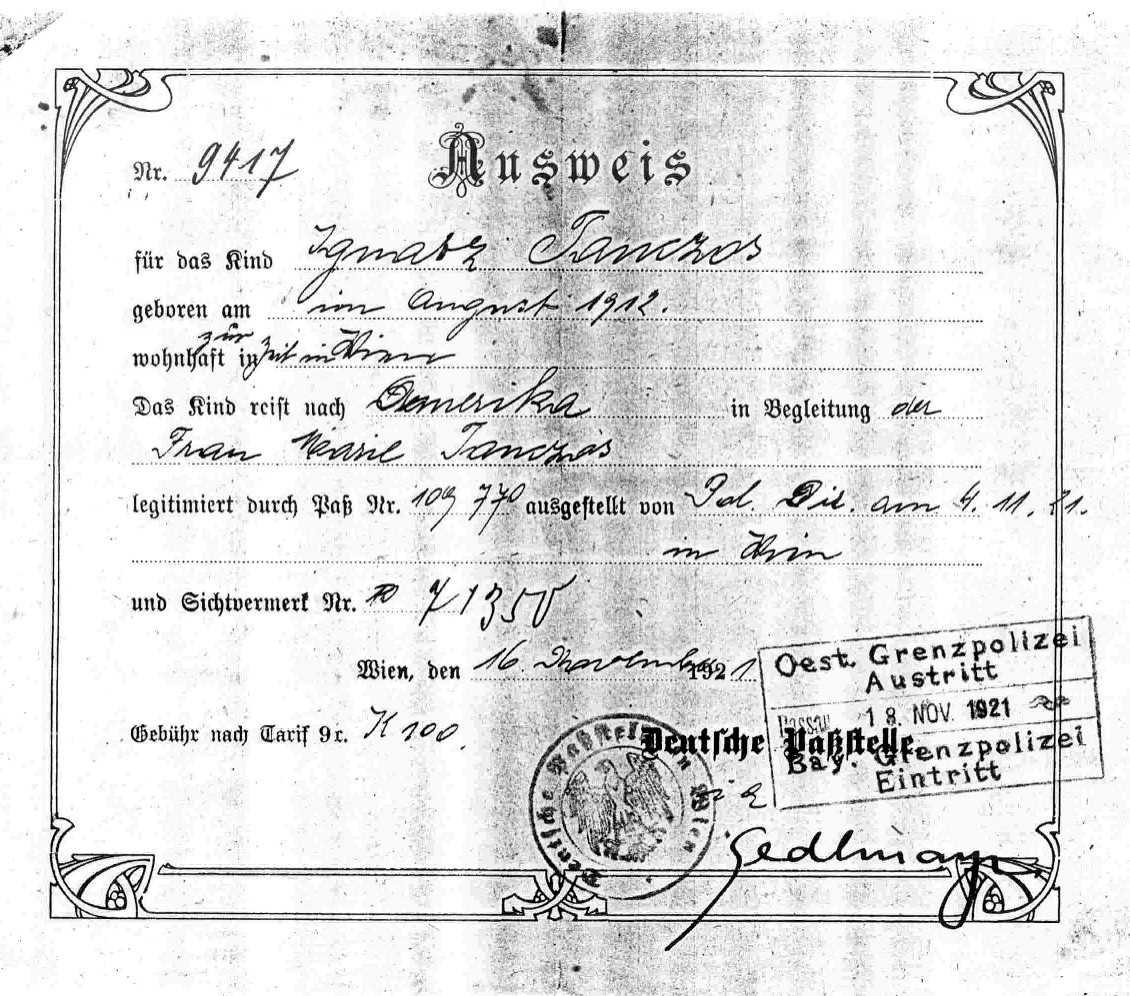|
The
|
THE BURGENLAND BUNCH NEWS - No. 245 July 31, 2014, © 2014 by The Burgenland Bunch All rights reserved. Permission to copy excerpts granted if credit is provided. Editor: Thomas Steichen (email: tj.steichen@comcast.net) Archives at: BB Newsletter Index Our 18th Year. The Burgenland Bunch Newsletter is issued monthly online. It was founded by Gerald Berghold (who retired Summer 2008 and died in August 2008). |
Current Status Of The BB: * Members: 2266 * Surname Entries: 7457 * Query Board Entries: 5345 * Staff Members: 17 |
This newsletter concerns: 1) THE PRESIDENT'S CORNER 2) A BURGENLAND DESCENDANT’S EXPERIENCE WITH AUTOSOMAL DNA GENETIC GENEALOGY (by Richard Potetz) 3) THE ENDANGERED BURGENLAND CROATIAN DIALECT (with Frank Paukowits) 4) GENEALOGY AND TOUR OF AUSTRIA-HUNGARY (by Robert A Chapman) 5) 1975 LETTER FROM THE BURGENLÄNDISCHE GEMEINSCHAFT 6) HISTORICAL BB NEWSLETTER ARTICLES: - AMTLICHER AUSWEIS (from Anna Kresh, Gerry Berghold & Albert Schuch) - ANSWERS TO ABOVE QUESTIONS: (Gerry Berghold & Albert Schuch) - BIRTHPLACE & BELONGING TO—TWO IMPORTANT AND POSSIBLY CONTRADICTORY TERMS FOR GENEALOGICAL RESEARCHERS (Fritz Königshofer) 7) ETHNIC EVENTS 8) BURGENLAND EMIGRANT OBITUARIES (courtesy of Bob Strauch) |
1) THE PRESIDENT'S CORNER (by Tom Steichen)  Concerning
this newsletter, after the bits and pieces here in my "Corner," our first full-length article is
one about Autosomal DNA Genetic Genealogy. Richard Potetz, a
Burgenland descendant (and a member of the BB's new DNA team), tells about his experiences with
it in exploring his family history. Concerning
this newsletter, after the bits and pieces here in my "Corner," our first full-length article is
one about Autosomal DNA Genetic Genealogy. Richard Potetz, a
Burgenland descendant (and a member of the BB's new DNA team), tells about his experiences with
it in exploring his family history.Article 3, is one where Frank Paukowits and I write about the Endangered Burgenland-Croatian Language. Our article is largely based on a scientific paper by Sabine Pawischitz (formerly of the University of Vienna, Department of Slavonic Studies), though we avoid the highly technical linguistic evidence she uses to support her opinion. In Article 4, Robert A Chapman shares a trip report about his experiences with Genealogy and Touring in a number of countries once joined in the Austro-Hungary Empire. Article 5 is largely a 1975 Letter from the Burgenländische Gemeinschaft. Julius Gmoser, then President of the BG, wrote a short note for a centennial celebration held in Allentown, PA. We provide a translation and a few additional comments. The remaining articles are our standard sections: Historical Newsletter Articles, and the Ethnic Events and Emigrant Obituaries sections.
I pondered this for a moment before responding:
The explanation came in a reply:
My thanks to my anonymous correspondent (you know who you are)!
So, it looks like Ancestry (the parent company) is shutting down further contributions to
these sites. If you have a Family Tree homepage and do not want it preserved, you need to
act soon to remove it. |
2) A BURGENLAND DESCENDANT’S EXPERIENCE WITH AUTOSOMAL DNA GENETIC GENEALOGY (by Richard Potetz) 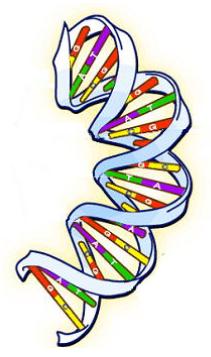 Past
Burgenland Bunch Member Marilyn Terrell and I are related... but we don’t know how. We share an
identical DNA segment in chromosome 17. Marilyn and I are estimated to be between 4th and
distant cousins, with 5th cousin being the most likely, based on the length of that segment. Past
Burgenland Bunch Member Marilyn Terrell and I are related... but we don’t know how. We share an
identical DNA segment in chromosome 17. Marilyn and I are estimated to be between 4th and
distant cousins, with 5th cousin being the most likely, based on the length of that segment.Our trees share the Pfister surname and our known Pfister ancestors lived three miles apart. Marilyn and I had both used the techniques taught by the Burgenland Bunch to establish our family trees back to the 1828 limits of the LDS Hungarian films. Marilyn has traced her Pfister ancestors back to Michael Pfister, born about 1785 in Krottendorf bei Neuhaus am Klausenbach, Burgenland. My Pfister ancestry is known back to my great-great-great-grandfather, Franz Pfister (1768-1838), who lived and died in Welten, Burgenland. Those villages, Krottendorf and Welten, were then part of the same manor, Herrschaft Dobra/Neuhaus. Too bad our family trees don’t go back far enough to identify the Pfister ancestor we likely share. How do scientists know our matching DNA segment is not due to random chance? The answer is statistics. The identical segment is too long to have been caused by chance. “Identical by descent” is the term used by the genetic genealogy scientists to indicate our matching segment came from a shared ancestor. So Marilyn and I are surely related even though we know from our conventional paper genealogies that we can be no closer than fourth cousins. Marilyn’s Pfister entry in the Burgenland Bunch Surname Listings sat near mine but, without DNA testing, we had no idea we were related. The ancestor that Marilyn and I share could have lived just a generation prior to our trees—or 10 generations earlier. Statistics can only tell us what is most likely; in our case, 5th cousins. The Autosomal DNA testing company 23andMe has tested saliva samples from more than half a million customers. Test results include a list of “DNA Relatives.” My list, now grown to 829 individuals, included Marilyn Terrell, who was willing to swap family tree information. Most of 23andMe’s customers are not interested in who they might be related to; most are only interested what their DNA can tell them of their health. Only 284 of my 829 DNA Relatives even bothered to list a username that might facilitate communication. Nevertheless, I have learned a few things about my ancestry. To explain my findings, I will briefly describe my ancestors’ locations then report my DNA test results. The ancestors of both of my parents are known back to the late 1700s. Records were found in the matrikels (church books) of the Sankt Martin a/d Raab parish and/or from the adjacent parishes of Jennersdorf and Fehring, Styria. With just two exceptions, all of my known ancestors married someone living within two miles of their home. One exception is my great-grandparents, Johann Pfister born in Welten and Rosina Holtzmann born in Neumarkt a/d Raab, five miles apart. The other exception is my parents, also born five miles apart, Michael Potetz in Neumarkt a/d Raab and Anna Sucher in Wartegg, Schiefer, Styria. I have just 28 great-great-great-grandparents, instead of the customary 32 (my parents were third cousins through two paths). In the Sankt Martin a/d Raab church records, 75% of marriages were between people born in the same village; 95% of marriages were between people born in the same parish. Since people found partners in the neighborhood of their small villages, all my known ancestors lived within a small area. In fact, the location of all 54 of my known direct ancestors could be covered by a circle six miles across. I expected that my DNA Relatives would all have connections to that small area. Autosomal chromosomes are the part of our DNA that is tested to find relatives who lived within the last few centuries. Autosomal chromosomes are the 22 chromosome pairs that are not involved in determining sex. The mixing of autosomal chromosomes that goes on for each new generation limits its ability to identify relatives to just the last few centuries. Companies that test autosomal DNA also include the X chromosome in their testing to increase the odds of finding matching DNA segments. For me, autosomal DNA testing resulted in 829 DNA Relatives listed in order of the amount of DNA they match with me. The highest non-anonymous person on my list, Lois Phillips, looked like someone with whom I should be able to find a shared ancestor. Lois Phillips and I share three DNA segments, two of which are quite long. Mathematically, we are expected to be third or fourth cousins. Lois has a POTETZ grandmother who married a PERSCHY grandfather. I have a POTETZ grandfather who married a PERSCHY grandmother. Both of us have established our family trees all the way back to the limits of the LDS records... but we cannot find any shared ancestor. Our PERSCHY ancestors both lived in Neumarkt a/d Raab, so that line appeared to be our best chance of identifying a shared ancestor. My great-great-grandparents, Franz Perschy and Theresia Neubauer, living in house 80, were contemporaries of Lois’s great-great-great-grandparents, Franz Perschy and Theresia Holtzman, living in house 35. Both couples had many children in those homes. Those Perschys were almost certainly related because there were few Perschy families—just three in the Burgenland house lists, all living in Neumarkt a/d Raab. Here are two more failed attempts at establishing relationships via autosomal testing... John Brewer and I both have Zotter ancestors who lived in Neumarkt a/d Raab; Michele Lighthouse, her daughter Caitlin, and I have Pfister ancestors who lived in Welten. I failed to find a shared, documented ancestor with either, though we are DNA Relatives. My experience with DNA testing, what some people call genetic genealogy, has been gratifying, but not for building my family tree. Sharing information with other genealogy hobbyists is much more effective than DNA testing for building a family tree. Burgenland Bunch members have built much of my tree—DNA testing has not. Burgenland Bunch member Evelyn Taggart Seegraves added an entire branch to my family tree: my ancestors who lived in Jennersdorf. Evelyn researched her FORJAN ancestry, visited Burgenland, and recorded her trip in the Burgenland Bunch Newsletter (No. 104C, February 28, 2002). That article even has a link to photos. It turned out that Evelyn is my third cousin. We share great-great grandparents, Franz Forjan (1818-1889) and Barbara Sommer-Nagl (1819-1896). For a genealogist, it doesn’t get any better than that. Just as fruitful for my tree was Burgenland Bunch member Katrina Lehrner, whose research is found at the internet site http://worldconnect.genealogy.rootsweb.com/cgi-bin/igm.cgi?db=katusz. Her site identified which Maria Zotter birth record was the Maria Zotter who married my great-grandfather, János Perschi, in 1868. The question grew from an incorrect age-of-the-bride entry in the wedding record, which was given as 28. There was no Maria Zotter born in Neumarkt 28 years before that wedding. Katrina Lehrner’s site lists the baptism of every Zotter recorded at the church in Sankt Martin a/d Raab from 1828 to 1895. Through a process of elimination, I agreed with Katrina; the Maria Zotter born on 5 September 1837 was my great-great grandmother, the Maria Zotter who married János Perschi in 1868. Their wedding record should have listed the age-of-the-bride as 30 instead of 28. That superb level of success in adding to my known ancestors contrasts to my lack of success using DNA testing. DNA testing has not identified a single person with whom I can identify our shared ancestor. Four of my “DNA Relatives” have in their tree the same surname living in the same village. Seven have known ancestors who lived in villages adjacent to villages of my known ancestors. Several more of my DNA Relatives have ancestors who lived within twenty miles of my known ancestors. Other people do better with DNA testing. Everyone else I know who has had their autosomal DNA tested have found people with whom they can identify their shared ancestor. My wife found third and fourth cousins. People with deeper family trees tend to do better than people like me, whose trees go back no further than ggg-grandparents. Even adoptees have found their birthparents. In general, DNA testing is not intended to serve as a substitute for conventional genealogy when building a family tree. Nevertheless, sharing information with DNA Relatives is enlightening and enjoyable on its own, and the locations of my DNA Relatives’ Burgenland ancestors are eye-opening: Here are some examples: Barbara Larson: Heiligenkreuz im Lafnitztal Gregory Miklos: Grossmurbisch Tom Roetz: Weiselbaum and Rax Sarah Nagel: Deutsch Ehrensdorf Thomas Niss: Hatzendorf, Styria, but he knows he has ancestors in nearby southern Burgenland What all of these places have in common is that they are all in southern Burgenland. It turns out that not one of my DNA Relatives with a known connection to Burgenland has a tie as far north as central Burgenland. Another finding, related to the mobility of our ancestors, is that many of my Burgenland DNA Relatives left for other parts of Austria and Germany too. Here’s an example, a message from my DNA Relative Astrid Hauser:
DNA Relatives with no known ties to Burgenland still help us understand our ancestry.
There are lots of DNA Relatives with connections to adjacent countries.
Exchanging information with DNA Relatives supplies endless mysteries but, when taken
as a whole, broadens our understanding of our ancestry. One lesson is our southern
Burgenland ancestors' movement is more east/west than north/south. Another lesson
is there was a tie to the lands of the aristocratic Batthyány family. Thirty or so of my DNA
Relatives have known ancestry in Burgenland. All were located in Batthyány lands. None are
further north than Deutsch Ehrensdorf. |
3) THE ENDANGERED BURGENLAND-CROATIAN LANGUAGE (with contributions from Frank Paukowits) 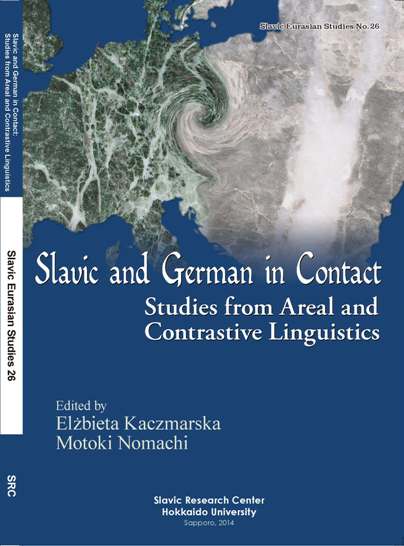 I
recently discovered an interesting English-language monograph entitled "Burgenland-Croatian:
First Signs of Language Decay," by Sabine Pawischitz (formerly of the University of Vienna,
Department of Slavonic Studies). This monograph comes from the book, "Slavic Eurasian Studies
No.26: Slavic and German in Contact: Studies from Areal and Contrastive Linguistics," edited
by Elzbieta Kaczmarska and Motoki Nomachi, 2014, Slavic Research Center, Hokkaido University,
Sapporo, Japan. I
recently discovered an interesting English-language monograph entitled "Burgenland-Croatian:
First Signs of Language Decay," by Sabine Pawischitz (formerly of the University of Vienna,
Department of Slavonic Studies). This monograph comes from the book, "Slavic Eurasian Studies
No.26: Slavic and German in Contact: Studies from Areal and Contrastive Linguistics," edited
by Elzbieta Kaczmarska and Motoki Nomachi, 2014, Slavic Research Center, Hokkaido University,
Sapporo, Japan.The table of contents for the book can be found here: contents; and the text of the monograph here: monograph.pdf. The monograph author, Sabine Pawischitz, was born in 1979 in Eisenstadt and grew up in a Burgenland-Croatian bilingual family. Her interest in her mother tongues led her to study Slavic (Serbo-Croatian, Russian, Bulgarian) and German (as foreign languages) in Vienna, Zagreb and Belgrade, accompanied by several internships in Bosnia, Bulgaria and Croatia. She has coauthored a number of books on language and education, taught German as a foreign language, and led seminars concerning education in a multilingual setting. She also writes as a freelancer for various Burgenland-Croatian minority magazines. The current monograph addresses the Burgenland-Croatian language and presents evidence that it is showing signs of becoming defunct. Given that Frank Paukowits has written on this language a number of times, I invited Frank to review the monograph and contribute to this article; he graciously agreed to do so. The core of the monograph deals with the complex and technical linguistic evidence that supports the argument that the language is decaying, including numerous example sentences that show critical changes to the language; we will largely skip this in our summary, as it is technical and well beyond our knowledge of any language (much less one I know nothing about!). However, the introduction and summary sections are understandable to the average person and present information that we feel our readers can appreciate. [For those of you with a working knowledge of Burgenland-Croatian, we suggest you read the full monograph (link given above) so you can see the specifics of what is happening to it.] With apologies to Ms. Pawischitz for any errors in our interpretation, we shall now proceed to quote her, paraphrase her and, if necessary (smile), plagiarize her in presenting our version of her material. Ms. Pawischitz begins with the socio-linguistic background of the language, pointing out that Burgenland-Croatian belongs to the family of South Slavic languages. This is so because the ethnic-Croatian group that has lived in the former West Hungary (corresponding to current areas around Vienna, in the Slovak Republic, in Burgenland and western-most Hungary) came in several waves of immigration from different areas of Croatia beginning in the sixteenth century. Three distinct dialects are represented in Burgenland-Croatian, namely Cakavian, Kajkavian, and (Old)-Štokavian (again, related to the areas in Croatia that the immigrants came from). Pawischitz also tells us that the Burgenland-Croatian standard language (which is an academic construct needed for the required multilingual teaching of the language and the development of required minority public signage in Burgenland) was formed on the basis of the Cakavian dialect, "because it represents the numerically largest group of speakers. Kajkavian and Old-Štokavian spoken in Burgenland include a number of Cakavian peculiarities, which further justified the choice of Cakavian as the common standard language." Here is the critical fact, as stated by Pawischitz: "Burgenland-Croatian is the only language in Austria to be on the UNESCO ‘Red List’ of endangered languages." Although Pawischitz states that Burgenland-Croatian "has altogether around 45,000 speakers," she also provides an appendix that tracks the counts, within census records, of people who report being Croatian-speaking (even if multilingual); those counts show a peak of ~43,750 speakers in 1920, diminishing steadily to only ~17,750 in 2001 (the latest available census breakout). This discrepancy in estimated speakers and census-reported speakers is telling, as it suggests that many speakers of the language choose to hide their ability or have too little skill to claim fluency. Looking at the UNESCO data on the language, they currently estimate only ~30,000 speakers, within 65 settlements in Burgenland, 14 settlements in Györ-Moson-Sopron and Vas counties of Hungary, and 5 settlements in the Bratislava district of Slovakia. They list its 'vitality' as 'definitely endangered.' UNESCO indicates that the critical factor defining that rating is "children no longer learn the language as mother tongue in the home." [If interested, you can learn more about endangered languages at the UNESCO site here.] Going back to Pawischitz, she asks: "If it is doomed to death, then how is it dying?" She begins her answer by speaking of the phases a language goes through during decay and eventual death. The first is a phase of complete bilingualism, wherein all speakers of it feel comfortable in both their mother language and in the language spoken by the surrounding majority. For Burgenland-Croatian, all Burgenland-Croats who speak Croatian also speak either German, Hungarian, or Slovak. Another phase is the loss of accent or the acquisition of a ‘foreign accent’. Pawischitz tells us that it is already true that, if you hear a younger person speaking Burgenland-Croatian, it often seems that the person is speaking German with Croatian vocabulary. She indicates that this phase also includes the deterioration of the standard accentuation, wherein, for Croatian, more and more speakers distinguish only the quantity of an accented vowel (long : short) and no longer distinguish the quality (rising : falling : circumflex). Croatian uses the 'quality' of the accent to express how something (denoted by a verb) relates to the flow of time. For example, in Croatian, the phrases "I helped him" -- "I was helping him" -- "I used to help him" are distinguished by the quality of accent; these all become the same when 'quality' is lost and the nuances of meanings in the language decrease. An early phase of language decay is the loss of word formation rules and the simple transfer of words or phases from the dominant language. Massive borrowing is a component of language decay and this is already the case for Burgenland-Croatian. Yet another crucial phase is a decline in the number of speakers; we documented the large decline in Burgenland-Croatian speakers above. Pawischitz states that the last two monographs on Burgenland-Croatian, Helene Koschat's Die cakavische Mundart von Baumgarten im Burgenland and Gerhard Neweklowsky's Die kroatischen Dialekte des Burgenlandes und der angrenzenden Gebiete, are from the year 1978 and, even back then, language decay was recognized and briefly described. Pawischitz also describes the field research she performed to assess the decline in the language. Her interest was mainly in the spoken language and her primary comparison was between the language of young speakers (the generation about age 30 who either spoke only Burgenland-Croatian during their childhood but did not use it as teenagers or who learned Burgenland-Croatian as teenagers or adults) versus that of their elders, the generation over seventy years of age. She notes that "the mother tongue of the seventy-plus generation is definitely Burgenland-Croatian. These people were educated in Burgenland-Croatian, are very religious, pray in Burgenland-Croatian, sing in Burgenland-Croatian, did not leave the house they were born in until they were grown-ups, married Burgenland-Croats, talked to their friends, families, relatives, and children in Burgenland-Croatian, etc. All these people have a very self-confident attitude towards their bilingualism..." She recorded around 100 hours of everyday speech by various Burgenland-Croatian native speakers from all over Burgenland and transcribed the interviews. She reports these phenomena and signs of language decay: a) massive borrowing b) grammaticalization of adverbs and their use instead of verb prefixes c) unexpected prepositions with verbs d) monostyle instead of using the verbal aspect or the use of paraphrases e) increasingly frequent use of the perfective verbal aspect, even in imperfective contexts f) loss of conjugations and tenses We will comment only lightly about these, as many of these phenomena require an intimate knowledge of the construction of the language to understand their significance. For a), she notes that one can now find many German loanwords in everyday Burgenland-Croatian communication as well as words borrowed from Hungarian and Slovak, even to the extent that some common Croatian expressions have gone out of fashion in favor of loaned words or expressions. Further, new vocabulary has been established through the standardization of Burgenland-Croatian. For b), she notes German influences on syntax and word formation, including constructions with German adverbs and Croatian verbs. For c), she notes that some verbs are, as a result of German influence, combined with unexpected prepositions and reflexive verbs are turning into transitive verbs, which is an imitation of the German paradigm. For d, e and f), she indicates monostyle is occurring among the younger generation as they no longer have a grasp of the full language. Burgenland-Croatian within the oldest generation is rich in expression; the younger generation is forced to use paraphrases to communicate beyond simple ideas. The older generation (rightfully) interprets this phenomenon as a gap in the younger speakers’ knowledge of the language. At this point, we skip the technical body of Ms. Pawischitz's work and move to her concluding comments. Therein she notes that written Burgenland-Croatian has recently been standardized more or less in parallel with the standard language of Croatia, without reflecting the verbal changes described above. Therefore, the everyday spoken language differs significantly from the Burgenland-Croatian standard. Further, the Burgenland-Croatian found on TV and radio, or in newspapers, is in the standard language... but nobody really speaks like that. She claims that the standard language tries to conserve some archaic features of Burgenland-Croatian, tries to be comprehensible to all speakers of Burgenland-Croatian (even though there are really three different dialects), and is becoming increasingly closer to the Croatian standard in order to escape the strong German influence. She questions whether this makes sense, even though she acknowledges the importance of a national minority having its own standard language. Now we add some comments of our own... UNESCO says that a language is endangered when its speakers cease to use it, use it in fewer and fewer situations, use fewer of its registers and speaking styles, and/or stop passing it on to the next generation. They note that Burgenland-Croatian, even in the minority population, is seen as being old-fashioned and outdated, as a language of less value, with this attitude towards Burgenland-Croatian occurring mainly within the last ten years. Probably, the one most-significant phenomenon impacting the viability of the Burgenland-Croatian language is technology. The internet, with its extensive use of the English language, has had an especially strong influence on Burgenland Croat children. Television, radio and newspapers also bring the dominant language directly into the home. This technology change parallels the change in Burgenland schools and towns: while bilingual arrangements exist in Croat areas, the primary languages of the young have become German and English. UNESCO also says it is still an open question whether literacy and education support the existence of a minority language or lead to its death. They question whether the standardization of a language (which has been in progress in Burgenland-Croatian over the last two or three decades) and language planning itself might also result in the decay of a language. The mobility of the population has also been a problem in sustaining the language. Since Burgenland does not have a vast manufacturing or factory economy, Croat people are forced to seek employment in Vienna and Graz, bringing them into daily contact with non-Croats, which has a further negative impact on the customs and language of the people as a whole. And of course, once there is contact, intermarriage with non-Croats is an all-too-common outcome. Unfortunately, the forces at play are definitely working against the perpetuation of the Burgenland-Croatian language. The demise of the language is likely inevitable. Yet, there are pockets where the language is still spoken as it was 90 to 100 years ago in the Croatian-dominated towns of Burgenland. However, those pockets are dispersed in the emigrant lands where the Burgenländers settled, in places like Pennsylvania, New York and Chicago. While the language has steadily changed in Burgenland, a more unadulterated form of the language exists here in the United States… spoken as our ancestors did many generations earlier. |
4) GENEALOGY AND TOUR OF AUSTRIA-HUNGARY (by Robert A Chapman) My maternal ancestors were Germanic families who lived in the Austro-Hungarian Empire (aka, Austria-Hungary) and that vast area is where the tour and genealogy aspects of this article come into play. That tour traces a large “J” over much of the holdings of that empire, with Prague (Czech Republic) at the top of the shank of the “J” and Ljubljana (Slovenia) at the point-end of its hook. Historically Europe’s boundaries have been dynamic. This is certainly true of the Austro-Hungarian Empire, which was ruled by the Habsburg Dynasty from the 13th century until 1918. Later, in the Cold War era, except for Austria, the countries on this tour were behind the Iron Curtain. Today, all of them are members of the European Union except for Serbia and Bosnia and Herzegovina. For the genealogy aspect, the tour took me to Burgenland in modern-day Austria and the Györ-Moson-Sopron district in modern-day Hungary. Even more specifically, it took me to the town of Gols on the eastern side of the Neusiedler See and the town of Lébény, which is about 30 miles southeast but in Hungary. These two towns are where my maternal ancestors lived and from where they emigrated. At the suggestion of Tom Steichen, this localized geographic region shall be referred to herein as the Heideboden. After three days of seeing the sites in Prague, the “J” was traveled by train with 2- or 3-night stopovers in Bratislava (Slovakia), Budapest (Hungary), Belgrade (Serbia), Zagreb (Croatia), and Ljubljana (Slovenia). 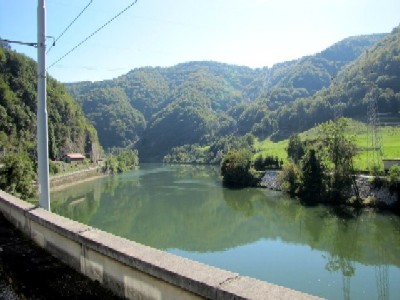 The
trains were all well-maintained and punctual. This train travel was supplemented with excursions
by auto into Banja Luca (Bosnia and Herzegovina) and the Heideboden. The
trains were all well-maintained and punctual. This train travel was supplemented with excursions
by auto into Banja Luca (Bosnia and Herzegovina) and the Heideboden.The area traversed by the “J” as viewed through a train window is beautifully fertile and surprisingly modern. It is interlaced with scenic rivers, notably the Vltava, the Danube, the Sava and the Ljubljanica. Many rail lines are built on the banks of these rivers [see Sava River between Zagreb, Croatia and Ljubljana, Slovenia in picture to the right]. The cities mentioned are modern and filled with history. Even though this trip was taken in September, the cities were alive with a surprising number of tourists. I left each city with the thought, “Gee, I would have enjoyed another day or two in this place.” 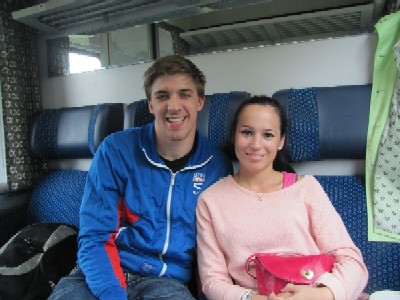 People
throughout the area were friendly and helpful. Communication in English was common enough,
although not as common as in Western Europe [Image to left: Hungarian college students on
train who helped translate some of my family documents]. People
throughout the area were friendly and helpful. Communication in English was common enough,
although not as common as in Western Europe [Image to left: Hungarian college students on
train who helped translate some of my family documents].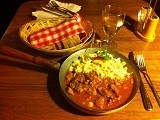 As
for hotels and restaurants, all of my hotels had free Internet connectivity (WiFi) and served a
complimentary breakfast, some of them with a wide variety of dishes. Restaurants were excellent
and moderately priced. Each country seemed to have its own unique version of goulash (gulyás
in Hungarian). The goulash as well as other dishes reminded me of my mother’s cooking [Image
above right: Goulash at Restaurant Szazeves in Budapest]. As
for hotels and restaurants, all of my hotels had free Internet connectivity (WiFi) and served a
complimentary breakfast, some of them with a wide variety of dishes. Restaurants were excellent
and moderately priced. Each country seemed to have its own unique version of goulash (gulyás
in Hungarian). The goulash as well as other dishes reminded me of my mother’s cooking [Image
above right: Goulash at Restaurant Szazeves in Budapest].The Heideboden is adjacent to the Neusiedler See, Austria’s largest lake. 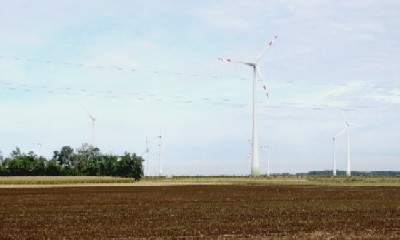 The
lake is a haven for wind surfers. In fact, Burgenland is now self-sufficient in renewable
energy, mostly through wind-powered plants [Image to right: Windmill farm outside Gols,
Burgenland, Austria]. All of Burgenland held festivities during my stay to celebrate this
self-sufficiency. The
lake is a haven for wind surfers. In fact, Burgenland is now self-sufficient in renewable
energy, mostly through wind-powered plants [Image to right: Windmill farm outside Gols,
Burgenland, Austria]. All of Burgenland held festivities during my stay to celebrate this
self-sufficiency.The Economy of the Heideboden is mostly agrarian. In fact, Burgenland is one of the major wine-producing areas in Austria. September is harvest time for these vineyards and the vines were heavily laden with beautiful clusters of grapes. 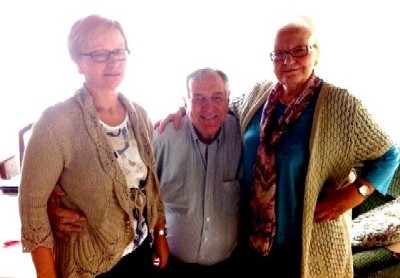 To
get a better sense of the country of my ancestors, I spent a goodly part of two days driving
around. I encountered many businesses with signs sporting surnames that I recognized. I was
fortunate to be introduced to two families with whom I shared a common surname [Image to
left: People sharing common ancestral surnames]. Although we weren’t able to precisely
locate a common ancestor, we are convinced that one exists. As I drove, I was moved by the
beauty of the countryside. Emigrating from such a place would not have been a decision lightly
made! To
get a better sense of the country of my ancestors, I spent a goodly part of two days driving
around. I encountered many businesses with signs sporting surnames that I recognized. I was
fortunate to be introduced to two families with whom I shared a common surname [Image to
left: People sharing common ancestral surnames]. Although we weren’t able to precisely
locate a common ancestor, we are convinced that one exists. As I drove, I was moved by the
beauty of the countryside. Emigrating from such a place would not have been a decision lightly
made!For genealogy research purposes, 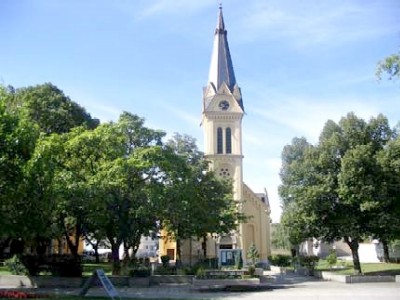 I
was able to spend one morning perusing the Birth and Baptism Records of the Evangelical
Lutheran Church in Gols, which date back to 1852 [Image to right: Evangelical Lutheran Church
in Gols]. For this task, I was totally unprepared. First, I had been told that these records
were destroyed in a church fire, so I was not expecting to find anything useful. Secondly, those
church records are handwritten in Deutsche Script, which is archaic. And, anyway, I do
not speak, read or write German. Thirdly, I was there on a Saturday morning and on that day the
church library closes at noon. I
was able to spend one morning perusing the Birth and Baptism Records of the Evangelical
Lutheran Church in Gols, which date back to 1852 [Image to right: Evangelical Lutheran Church
in Gols]. For this task, I was totally unprepared. First, I had been told that these records
were destroyed in a church fire, so I was not expecting to find anything useful. Secondly, those
church records are handwritten in Deutsche Script, which is archaic. And, anyway, I do
not speak, read or write German. Thirdly, I was there on a Saturday morning and on that day the
church library closes at noon.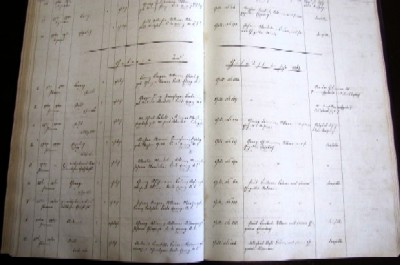 Fortunately,
the pastor and her assistant generously provided some assistance so I was able to find nine
entries of interest. Those nine included the entry in 1877 of my maternal grandmother’s birth
and baptism [Image to left: Birth and Baptism Records of the Evangelical Lutheran Church in
Gols]. Fortunately,
the pastor and her assistant generously provided some assistance so I was able to find nine
entries of interest. Those nine included the entry in 1877 of my maternal grandmother’s birth
and baptism [Image to left: Birth and Baptism Records of the Evangelical Lutheran Church in
Gols].All things considered, the trip was wonderful! In fact, I plan to return later this year for a different tour but one that also includes a stop in the Heideboden. The author can be reached via e-mail at rachapman@megadyne.info. |
5) 1975 LETTER FROM THE BURGENLÄNDISCHE GEMEINSCHAFT The following letter appeared in the program for the "Centennial of the Migration from Burgenland to the United States 1875–1975," held in Allentown, PA, Nov. 11, 1975. Following it, we present a translation and then a few comments.
Translation (done with assistance from Bob Strauch):
Comments: 1975 was the 20th anniversary of the Austrian Constitution, which was
enacted at the end of the post-WW-II era and the Russian occupation. 1975 also was declared the
"Year of the Immigrants" in Burgenland and it was nearly the 20th anniversary of the BG,
which was established in 1956. Julius Gmoser drew on all of these facts to declare the next 20
years for the BG as a joint effort with us in America. Julius died in 1985, unable to see
whether his twenty-year plan would be a success. Now it is not just 20 years later, but nearly
40 years later... and his BG survives and our BB was born and has already reached its 18th year. |
6) HISTORICAL BB NEWSLETTER ARTICLES Editor: This is part of our series designed to recycle interesting articles from the BB Newsletters of 10 years ago. However, I did not find a suitable article from July 2004, so I again went back to the early days of the BB, to Newsletters No. 33 (15 Apr 1998) and No. 36 (30 May 1998). In #33, I found an article and response about early Austrian ID documents, which prompted a follow-up article in NL #36. It is the follow-up article that I find more important, but the initial article has value and sets the stage for the follow-up. THE BURGENLAND BUNCH NEWS No. 33 Apr 15, 1998 AMTLICHER AUSWEIS (from Anna Kresh, Gerry Berghold & Albert Schuch) 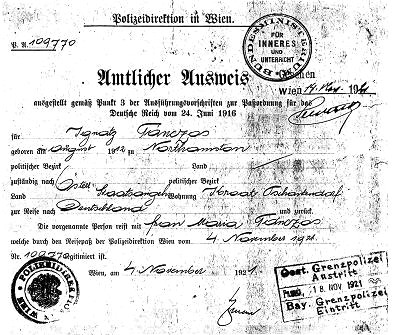 (Ed.
note: like many of us Anna Kresh has some family documents in need of translation. While waiting
for your editor to help she uses Alta Vista and almost completes her translation. She says:) (Ed.
note: like many of us Anna Kresh has some family documents in need of translation. While waiting
for your editor to help she uses Alta Vista and almost completes her translation. She says:)"This is the travel paper for my brother from Kr. T. to Germany on his way to Hamburg and return to the US. Re: the line beginning with "zuständig nach" and the one following it - I can't find any good translation for "zuständig nach" and "Staatsangeh" (angehen?) that makes any sense. The "Österr:" and "Staatsangeh." might both be a 2-line response for "zuständig nach". What is "Passau"?
(ORIGINAL) Polizeidirektion in Wien
(TRANSLATION) Police Headquarters in Vienna (ORIGINAL) Nr. 9417 AUSWEIS
|
7) ETHNIC EVENTS LEHIGH VALLEY, PA Sunday, August 3: Parish Picnic at St. Peter’s Roman Catholic Church in Coplay. Polka Mass at 10:30 AM. Music by the Emil Schanta Band. Info: www.stpeterchurchcoplay.com. Saturday, August 16: Bavarian Biergarten at Emmaus Community Park. Sponsored by the Lehigh Sängerbund. Preceded by soccer game at 4 PM. Entertainment by The Adlers and the Lehigh Sängerbund Folk Singers. Info: www.lehighsaengerbund.org. Sunday, August 17: German-American Day at the Reading Liederkranz. Entertainment by Spitze, the Reading Liederkranz Singers, and the Edelweiss and Auerhahn Schuhplattlers. Info: www.readingliederkranz.com. Sunday, August 17: Summer Dance at Holy Family Club in Nazareth. Music by the Walt Groller Orchestra. Info: www.holyfamilyclub.com. Sunday, August 24: Coplay Community Days at Coplay Parkway. Music by the Walt Groller Orchestra. Info: www.coplayborough.org. Sunday, August 31: Parish Picnic at St. John the Baptist Roman Catholic Church in Stiles (Whitehall). Music by the Joe Weber Orchestra. |
8) BURGENLAND EMIGRANT OBITUARIES (courtesy of Bob Strauch) John Mulzet  John
J. Mulzet, 89 years, of Macungie, Pennsylvania, formerly of Fogelsville, passed away June 27,
2014 at Lehigh Valley Hospital, Salisbury Twp. John
J. Mulzet, 89 years, of Macungie, Pennsylvania, formerly of Fogelsville, passed away June 27,
2014 at Lehigh Valley Hospital, Salisbury Twp.He was the widower of Rose M. (Muick) Mulzet. Born in Inzenhof, Austria he was a son of the late John and Julia (Artinger) Mulzet. John was a welder for the former Lehigh Portland Cement in Fogelsville for 25 years and then for the Tyler Pipe Line until he retired. He was a member of St. Joseph the Worker Catholic Church in Orefield. John loved playing cards, polka dancing, driving his 1967 pickup truck and watching Penn State and the Phillies. Survivors: Daughter, Kathleen M. wife of Carl J. Ebert of Fogelsville; brother, Stephen M. of Oklahoma City, OK, sisters; Bertha Elane of Allentown, Angeline Rohrbach of Center Valley, and Elsie Ruhe of New Tripoli, granddaughters, Sheryl Mockler of Fogelsville and Tina wife of Andrew Krafts of Silver Spring, MD; 4 Great-grandchildren, Joseph, Sean, Sarah and Hannah. He was predeceased by a sister Julie Turk. Services: 11 AM Tuesday, July 1 at Keller Funeral Homes, Inc. 1018 Church St., Fogelsville with the Rev. Joseph Kweder officiating. Visitation will be from 10 to 11 AM. Interment will be in Resurrection Cemetery, Allentown. Online condolences may be offered to the family at www.KellerFuneralHomes.com Contributions: Contributions to be made to St. Joseph the Worker Catholic Church, 1879 Applewood Dr., Orefield, 18069 or the Alzheimer's Association, Lehigh Valley Branch, 617 A Main St., Hellertown, PA 18055. Published in Morning Call on June 29, 2014. Mary Walles (née Adlovits)  Mary
Walles, 95, of Bogota, New Jersey, formerly of Bronx, New York, passed away on July 19, 2014. Mary
Walles, 95, of Bogota, New Jersey, formerly of Bronx, New York, passed away on July 19, 2014.She was the devoted wife of the late Edward Walles. Born in Glasing, Austria, she was a daughter of the late Franz and Maria (Unger) Adlovits. Survivors: children, Mary (Charles) Wagner, Ed (Doris) Walles, Frank (Teri) Walles, and Joseph Walles; grandchildren, Richard (Mandi) Wagner, Elizabeth (Joe) Cilino, Joseph (Robin) Wallles, Ed, Carolyn, Celine, T.J., Bobby, Bridgitte, Tyler, Therese and Katrina Walles; and great-grandchildren, Anthony, Nicole, Beth Ann, Tomas, Lucas, Nicholas, Zachary, Kyle, Michael and Taylor. Services: Visiting at Petrik Funeral Home, 140 Palisade Ave., Bogota on Monday from 2-4 and 7-9 PM. All will meet at the funeral home on Tuesday at 9 AM for the Funeral Mass at St. Joseph's R.C. Church, Bogota at 10 AM. Interment at St. Raymond's Cemetery, Bronx, NY. In lieu of flowers, donations to Holy Name Hospice would be appreciated. Published in The Record/Herald News on July 21, 2014 Stefan Szauer  Stefan
"Steve" Szauer, age 81, of South Bend, Indiana, died unexpectedly Tuesday, July 22, 2014, in his
home. Stefan
"Steve" Szauer, age 81, of South Bend, Indiana, died unexpectedly Tuesday, July 22, 2014, in his
home.Born December 26, 1932 in Nikitsch, Austria, he was a son of the late Peter and Francesca (Derdak) Szauer. Steve immigrated to Toronto, Canada, when he was 18 years old and in 1955 moved to South Bend, IN, where he met the love of his life, Rose Buczolich. They were married on May 21, 1955, in Our Lady of Hungary Catholic Church. Steve began his working career in the USA as a butcher on a farm and then worked for several years at A&P, also as a butcher. During this time, he became interested in computers and attended school in Chicago to learn data processing. When Steve finished school, he was hired by Uniroyal where he worked in data processing for 38 years until his retirement and Uniroyal closed its doors for good. He then worked for several years at Memorial Hospital. He proudly served his adopted country in the U.S. Army Reserves. Steve spoke four languages; Croatian, German, Hungarian and English. He was a voracious reader and was especially interested in everything written about WW-II, as his father was killed during that war when Steve was a child, leaving his mother to raise four children on her own. He was an avid soccer fan enjoying World Cup Soccer games with his son Steve and in his younger days played in a soccer league in South Bend with Hungarian immigrants. Steve was proud to pass his soccer skills on to his grandchildren, Stephanie and Bjorn, who played for St. Jude and Riley High School in South Bend. Steve took pride in his yard and garden, always "puttering" around amongst the plants and lawn. He was an accomplished cook and baker. His specialty was Wienerschnitzel and his apricot squares were the best! Steve was always helping someone, whether it was a Hungarian immigrant looking for a job or needing to get a driver's license, a friend who needed help with landscaping, and especially taking care of his family. Steve would take charge and get the job done. Steve was preceded in death by his parents, Peter & Francesca Szauer, brother, Peter Szauer, and sister, Maria Pinterich, all of Austria. He is survived by his wife of 59 years, Rose, his son, Steve, Jr., and daughter, Sue (Brian) Forsberg of South Bend. He is also survived by his granddaughter, Stephanie (Matthew) Iacobucci of Camby, IN, grandson, Bjorn of South Bend, and great-grandson, Maximus "Max" Iacobucci of Camby, IN. He is survived by his brother, Mathias (Evelyn) Szauer of Eisenstadt, Austria. Steve leaves behind several nieces and nephews in Austria along with many friends in South Bend, Chicago, Toronto and Austria. A Mass of Christian Burial will be celebrated at 10:00 a.m. Monday, July 28, 2014, at Our Lady of Hungary Catholic Church, 829 West Calvert, South Bend, IN. Burial will follow at Southlawn Cemetery. Family and friends may call from 2:00 6:00 p.m. Sunday, July 27, 2014, in the Zahoran Funeral Home, 1826 S. Kemble Ave., where a Rosary will be recited at 4:00 p.m. Memorial contributions may be made to Our Lady of Hungary Church. To leave an online condolence, please visit our website at www.zahoran.com, or our facebook page, Zahoran Funeral Home. Published in South Bend Tribune on July 24, 2014 |
END OF NEWSLETTER |
NOTICE (Terms and Conditions): The Burgenland Bunch (BB) was formed and exists to assist Burgenland descendants in their research into their heritage and, toward that end, reserves the right to use any communication you have with us (email, letter, phone conversation, etc.) as part of our information exchange and educational research efforts. • If you do not want your communication to be used for this purpose, indicate that it is "confidential" and we will abide by that request. • Correspondents who communicate with the BB without requesting confidentiality retain their copyright but give a non-exclusive license to the BB allowing us to forward to BB members, publish in our monthly newsletter or on our website, and/or subsequently and permanently archive all or parts of such communications. The Burgenland Bunch homepage (website) can be found at: http://www.the-burgenland-bunch.org Burgenland Bunch Newsletter, copyright © 2014 by The Burgenland Bunch All rights reserved. Permission to copy excerpts granted if credit is provided. |
 News
News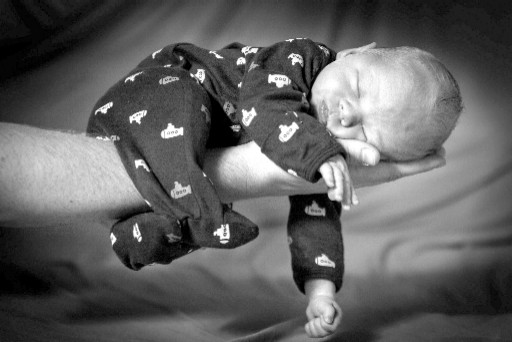 Grandfatherly
Bragging: One of the benefits of being Editor of this newsletter is that I can
use it as an occasional forum for personal news... and this is one such item. I am pleased to
announce that my second grandchild was born in Washington, DC, in June: here is Henry Von
Steichen, resting trustingly on his father's strong hand, a whole 7 pounds, eight ounces and
20 inches long at birth.
Grandfatherly
Bragging: One of the benefits of being Editor of this newsletter is that I can
use it as an occasional forum for personal news... and this is one such item. I am pleased to
announce that my second grandchild was born in Washington, DC, in June: here is Henry Von
Steichen, resting trustingly on his father's strong hand, a whole 7 pounds, eight ounces and
20 inches long at birth. Update
on book "The Burgenländer Emigration to America": As I will do for a while, here is this
month's update on purchases of the English issue of the 3rd edition of Dr. Walter Dujmovits'
book “Die Amerika-Wanderung Der Burgenländer.”
Update
on book "The Burgenländer Emigration to America": As I will do for a while, here is this
month's update on purchases of the English issue of the 3rd edition of Dr. Walter Dujmovits'
book “Die Amerika-Wanderung Der Burgenländer.”  You
are going too far with the genealogy thing: “….a possible family link at the YYYYY Park Zoo”?
I’ve heard of people supposedly connecting back to Adam and Eve… but going the zoo route is
just too far! TOO FAR! …but I have to ask: your side of the family or hers? LOL! I’m still
chuckling
You
are going too far with the genealogy thing: “….a possible family link at the YYYYY Park Zoo”?
I’ve heard of people supposedly connecting back to Adam and Eve… but going the zoo route is
just too far! TOO FAR! …but I have to ask: your side of the family or hers? LOL! I’m still
chuckling
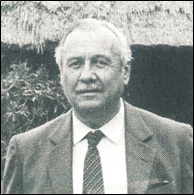 Liebe
Landsleute in Pennsylvanien!
Liebe
Landsleute in Pennsylvanien!